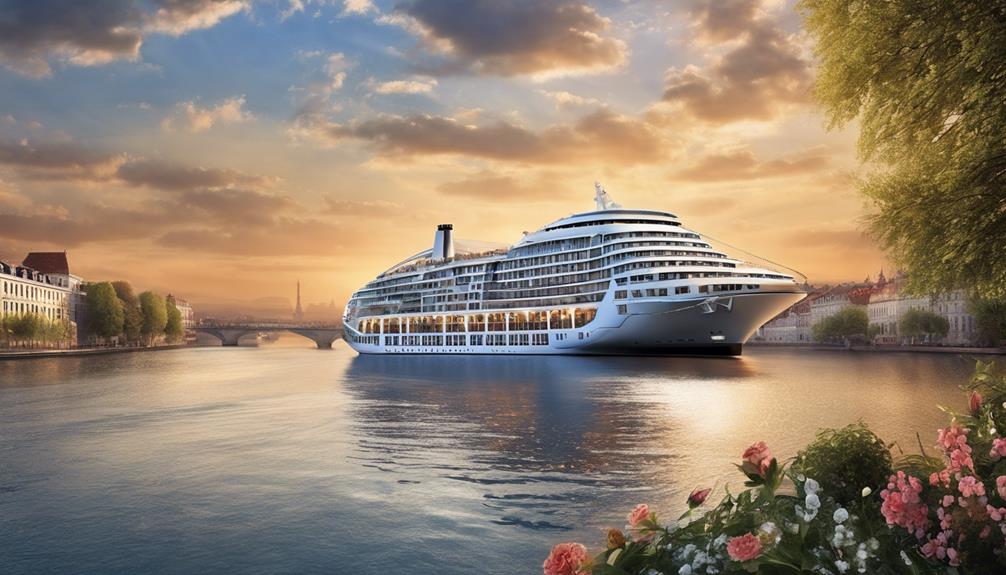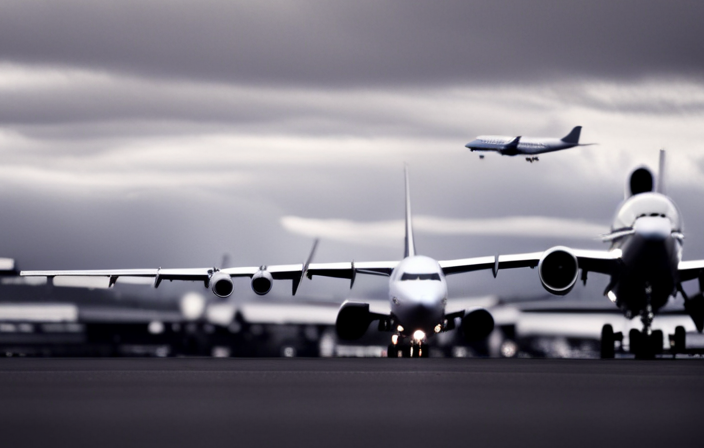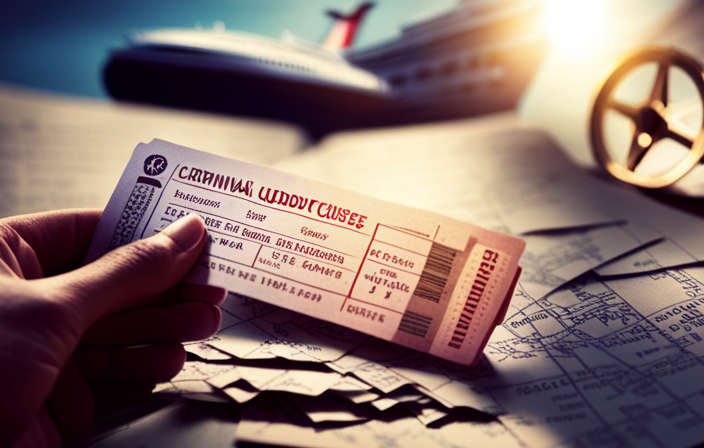As someone profoundly interested in cars, the development of automobile technology has always captivated me. From the inception of manual transmissions to the emergence of electric vehicles, every technological advancement has moved us towards a driving experience that is increasingly pleasurable and efficient.
One such advancement that has caught my attention is dynamic cruise control. This cutting-edge feature promises to revolutionize the way we navigate the open road. Gone are the days of constantly adjusting our speed to maintain a safe distance from the vehicle ahead.
With dynamic cruise control, our cars can now automatically adapt their speed to match the flow of traffic, making long drives more comfortable and stress-free.
In this article, I will delve into the intricacies of dynamic cruise control, exploring how it works, its benefits, and the different types of systems available. So, buckle up and get ready to discover the future of cruise control technology.
Key Takeaways
- Dynamic cruise control utilizes advanced sensors to detect and respond to changing road conditions in real-time.
- Predictive analytics analyze traffic patterns and navigation data to anticipate upcoming changes in speed limits, road conditions, and traffic congestion.
- Cruise control systems become more autonomous, allowing the vehicle to take over control completely in certain situations.
- Familiarizing oneself with the system, understanding its benefits and limitations, and staying alert and engaged are key to using dynamic cruise control effectively.
Overview of Cruise Control Technology
Cruise control advancements have come a long way since their inception, changing the driving experience for millions of people worldwide. The history of cruise control can be traced back to the 1940s when it was first introduced as a way to maintain a steady speed on long highway drives.
Over the years, this technology has evolved and become more sophisticated, incorporating features like adaptive cruise control and dynamic cruise control. These advancements have made driving safer and more convenient, allowing drivers to maintain a consistent speed without constantly adjusting the throttle.
Now, let’s explore how dynamic cruise control works, taking this technology to the next level.
How Dynamic Cruise Control Works
Imagine sailing smoothly down the highway while your car effortlessly maintains the perfect speed and distance from the vehicle in front of you, thanks to this high-tech system. Dynamic cruise control, also known as adaptive cruise control, is a revolutionary feature that takes traditional cruise control to the next level.
It uses advanced sensors, such as radar or cameras, to detect the distance and speed of the vehicle ahead. Here’s how it works:
- The system constantly monitors the road ahead and adjusts your car’s speed accordingly.
- It automatically slows down or accelerates to maintain a safe following distance.
- If the vehicle in front slows down or comes to a stop, dynamic cruise control will bring your car to a complete halt and resume when traffic moves again.
Using dynamic cruise control offers numerous advantages. It reduces driver fatigue and stress, enhances safety by preventing rear-end collisions, and improves fuel efficiency.
Transitioning to the next section, let’s explore the benefits of dynamic cruise control in more detail.
Benefits of Dynamic Cruise Control
Experience the freedom of effortlessly maintaining a safe distance and speed on the highway while your car takes care of adjusting to the traffic ahead.
Dynamic cruise control offers numerous benefits and advantages for drivers. Firstly, it enhances safety by automatically adjusting the speed of your vehicle to maintain a safe following distance, reducing the risk of rear-end collisions.
Additionally, it reduces driver fatigue and stress by taking over the task of constantly monitoring and adjusting speed. This allows the driver to focus more on the road and enjoy a smoother, more comfortable ride.
Dynamic cruise control also improves fuel efficiency by optimizing speed and acceleration patterns. It can even help to reduce traffic congestion by promoting a more consistent flow of vehicles on the road.
Transitioning into the subsequent section, let’s explore the different types of dynamic cruise control systems available.
Different Types of Dynamic Cruise Control Systems
There are several types of adaptive cruise control systems available, each offering unique features and benefits to drivers. Did you know that over 70% of new vehicles sold in the United States now come equipped with some form of adaptive cruise control?
-
Full-Speed Range: This type of dynamic cruise control can operate at any speed, from a complete stop to highway speeds. It uses sensors to detect the distance and speed of vehicles ahead, adjusting the speed accordingly.
-
Stop and Go: This system is designed for heavy traffic situations, allowing the vehicle to automatically come to a complete stop and resume driving when the traffic moves again. It greatly reduces driver fatigue and makes commuting in congested areas more convenient.
-
Lane Centering: This advanced feature combines adaptive cruise control with lane-keeping technology. It can automatically steer the vehicle to keep it centered in the lane, providing an extra layer of safety and convenience.
Considering the various types and capabilities of dynamic cruise control systems, it is important to also understand their limitations and considerations.
Limitations and Considerations of Dynamic Cruise Control
Despite its convenience and safety features, it’s crucial to be aware of the limitations and factors to consider when using adaptive cruise control systems. While dynamic cruise control can greatly enhance driving experiences, understanding its limitations is important for safe and effective use. Here are some key limitations and considerations to keep in mind:
| Limitation | Consideration |
|---|---|
| Limited effectiveness in heavy traffic | Maintain alertness and be prepared to manually intervene |
| Reduced functionality in poor weather conditions | Adjust speed and distance settings accordingly |
| Inability to detect stationary objects | Be vigilant and ready to brake if necessary |
| Potential for false alerts or system malfunctions | Regularly maintain and calibrate the system |
| Dependency on proper road markings | Avoid using the system on poorly marked roads |
By acknowledging these limitations and adhering to the necessary considerations, drivers can maximize the benefits of dynamic cruise control while minimizing potential risks. Transitioning into the subsequent section, it’s also important to explore how adaptive cruise control integrates with other advanced driver assistance systems.
Integration with Other Advanced Driver Assistance Systems
Maximizing the benefits of adaptive cruise control involves understanding how it seamlessly integrates with other advanced driver assistance systems. This integration creates a harmonious symphony of technology and safety on the road.
However, integration challenges may arise when combining dynamic cruise control with other systems such as lane-keeping assist or forward collision warning. These systems rely on similar sensor inputs. Ensuring they work together flawlessly requires complex coordination and communication between different modules.
Potential safety concerns may arise if there are delays or errors in this integration process. It could lead to incorrect or conflicting information being provided to the driver. Therefore, manufacturers must thoroughly test and validate these integrated systems to ensure they work reliably in all scenarios.
Transitioning into the subsequent section, let’s explore popular vehicles equipped with dynamic cruise control and how it enhances their driving experience.
Popular Vehicles with Dynamic Cruise Control
Let’s take a look at some popular vehicles that have embraced the seamless integration of adaptive cruise control, enhancing the driving experience for their lucky owners.
One of the popular vehicles that offer dynamic cruise control is the Tesla Model S. With its Autopilot feature, the Model S can automatically adjust its speed to maintain a safe distance from the vehicle ahead.
Another popular vehicle with dynamic cruise control is the BMW 5 Series. The BMW Active Cruise Control system uses radar to detect vehicles ahead and automatically adjusts the speed and distance accordingly.
Other popular vehicles that offer this feature include the Audi A4, Mercedes-Benz E-Class, and Volvo XC90.
The benefits of dynamic cruise control in these vehicles include improved safety, reduced driver fatigue, and enhanced comfort during long drives.
As technology continues to advance, we can expect even more exciting developments in cruise control technology.
Future Developments in Cruise Control Technology
Get ready for an exciting future of cruise control technology, where driving will be even more effortless and enjoyable than ever before. The advancements in cruise control technology will have a significant impact on driving habits, making long trips more comfortable and safer. Here are three future developments to look forward to:
-
Advanced Sensors: Future cruise control systems will use advanced sensors to detect and respond to changing road conditions in real-time. This will allow the vehicle to automatically adjust its speed and distance from other vehicles, ensuring a smoother and more efficient driving experience.
-
Predictive Analytics: Cruise control systems of the future will incorporate predictive analytics, analyzing traffic patterns and navigation data to anticipate upcoming changes in speed limits, road conditions, and traffic congestion. This will enable the vehicle to automatically adjust its speed and maintain a safe distance from other vehicles, improving overall efficiency and safety.
-
Autonomous Capabilities: In the future, cruise control systems will become more autonomous, allowing the vehicle to take over control completely in certain situations. This will enable the driver to relax and enjoy the ride, while the vehicle handles the acceleration, braking, and steering.
With these future advancements, using dynamic cruise control effectively will become even more important.
Tips for Using Dynamic Cruise Control Effectively
When using dynamic cruise control, it is important to familiarize yourself with the system to ensure safe and effective use. Understanding the various settings and features will help you make the most of this technology.
Additionally, it is crucial to stay alert and engaged while using the system, as it is not a substitute for attentive driving.
Lastly, it is essential to understand the limitations of dynamic cruise control, such as its inability to detect stationary objects or sudden changes in traffic patterns.
By following these tips, you can maximize the benefits of dynamic cruise control while maintaining a high level of safety on the road.
Familiarize Yourself with the System
Explore how dynamic cruise control works and how it can enhance your driving experience.
-
Understand the benefits: Dynamic cruise control takes the hassle out of maintaining a consistent speed by automatically adjusting your vehicle’s speed to match the flow of traffic. It not only reduces driver fatigue but also promotes fuel efficiency.
-
Know the limitations: While dynamic cruise control is a great tool, it’s important to be aware of its limitations. It may not work properly in certain weather conditions, such as heavy rain or snow, and it may struggle to detect stationary objects. Always stay vigilant and be prepared to take control of the vehicle if needed.
-
Adjust your following distance: One key tip for using dynamic cruise control effectively is to adjust the following distance setting. This allows you to maintain a safe distance from the vehicle ahead while still benefiting from the convenience of the system.
By familiarizing yourself with the system and its limitations, you can make the most of dynamic cruise control. Stay alert and engaged as we dive into the next section about staying safe on the road.
Stay Alert and Engaged
To make the most of your driving experience, it’s crucial that you stay alert and engaged on the road.
When using dynamic cruise control, it’s important to stay focused and avoid distractions. While the system helps maintain a safe distance from the vehicle ahead, it’s still vital to pay attention to your surroundings and be ready to take control if needed.
Avoid activities that can divert your attention, such as using your phone or engaging in deep conversations. Keep your eyes on the road and be prepared to react to sudden changes in traffic conditions.
Understanding the system’s limitations is essential to ensure your safety. It’s important to remember that dynamic cruise control may not detect stationary objects or pedestrians, so always be vigilant and ready to intervene if necessary.
Understand the System’s Limitations
Ensure that you have a clear understanding of the system’s limitations and stay vigilant while using dynamic cruise control. While this advanced technology offers convenience and safety benefits, it is important to recognize its limitations and consider safety precautions. Here are some key limitations of dynamic cruise control to keep in mind:
| Limitations | Safety Considerations |
|---|---|
| The system may not detect stationary objects such as stopped vehicles or obstacles. | Always be prepared to take control of the vehicle and apply the brakes if necessary. |
| The system may not function properly in adverse weather conditions such as heavy rain or snow. | Adjust your driving behavior accordingly and be cautious in challenging weather conditions. |
| The system may not recognize sudden changes in traffic patterns or unexpected maneuvers by other vehicles. | Continuously scan the road ahead and be ready to react to any sudden changes in traffic. |
Understanding these limitations and taking appropriate safety considerations will help ensure a safe and effective use of dynamic cruise control. In the next section, we will discuss the evolution of cruise control technology and its impact on driving experiences.
Conclusion: The Evolution of Cruise Control Technology
In conclusion, the evolution of cruise control technology has revolutionized driving experiences. The benefits of dynamic cruise control are undeniable. This advanced system not only maintains a set speed, but also adjusts it based on the surrounding traffic conditions.
By using radar and sensors, dynamic cruise control can detect the distance between your vehicle and the one in front of you, ensuring a safe and comfortable driving experience. It automatically slows down or speeds up your vehicle to maintain a preset distance, reducing the need for constant adjustments.
Additionally, dynamic cruise control can also detect lane markings and assist in keeping your vehicle within the lane. This technology has greatly improved the convenience, safety, and efficiency of driving, making it an essential feature in modern vehicles.
Frequently Asked Questions
Can dynamic cruise control be used in all types of vehicles?
Dynamic cruise control offers numerous benefits for long distance driving, such as reducing driver fatigue and maintaining a safe distance from vehicles ahead. However, it may have limitations when used in off-road vehicles due to rugged terrain and unpredictable driving conditions.
Is dynamic cruise control suitable for driving in heavy traffic?
In heavy traffic, dynamic cruise control can enhance safety by maintaining a safe following distance and automatically adjusting the speed. However, it may not be suitable in all situations due to sudden lane changes and unpredictable behavior of other drivers.
Can dynamic cruise control detect and respond to pedestrians or cyclists?
Dynamic cruise control uses radar and cameras to detect pedestrians and cyclists. It automatically adjusts the vehicle’s speed to maintain a safe distance. Advantages include improved safety, reduced driver fatigue, but disadvantages include limitations in certain scenarios and reliance on technology.
How does dynamic cruise control adjust to different road conditions, such as wet or slippery surfaces?
Dynamic cruise control adjusts to different road conditions, such as wet or slippery surfaces, using various adjustment mechanisms and safety features. These include sensors that detect changes in traction and automatically adjust the vehicle’s speed and braking to maintain optimal control and safety.
Are there any legal restrictions or regulations regarding the use of dynamic cruise control?
Legal implications and safety concerns regarding dynamic cruise control include potential liability for accidents, as well as the need for drivers to remain attentive and ready to take control in emergency situations.
Conclusion
Dynamic cruise control is a game-changer in automotive technology. It adapts to changing road conditions and maintains a safe distance from other vehicles. It provides convenience and safety that traditional cruise control systems can’t match.
Advancements in artificial intelligence and sensor technology will continue to enhance dynamic cruise control. This will make driving experiences even more relaxed and enjoyable.
So buckle up and get ready for a smooth ride into the future of automotive innovation! Remember, always keep your eyes on the road because even the most advanced cruise control systems can’t replace good old-fashioned driver attention.
Claire, a creative soul with an unquenchable thirst for storytelling, is an integral part of the Voyager Info team. As a dedicated writer, she weaves captivating narratives that transport readers to enchanting cruise destinations and beyond.
Claire’s love affair with writing began at an early age when she discovered the magic of words and their ability to craft worlds and emotions. Her innate curiosity led her to explore various literary genres, but it was travel writing that truly captured her heart. Drawing inspiration from her own globetrotting adventures and encounters with diverse cultures, Claire embarked on a journey to become a travel writer par excellence.











